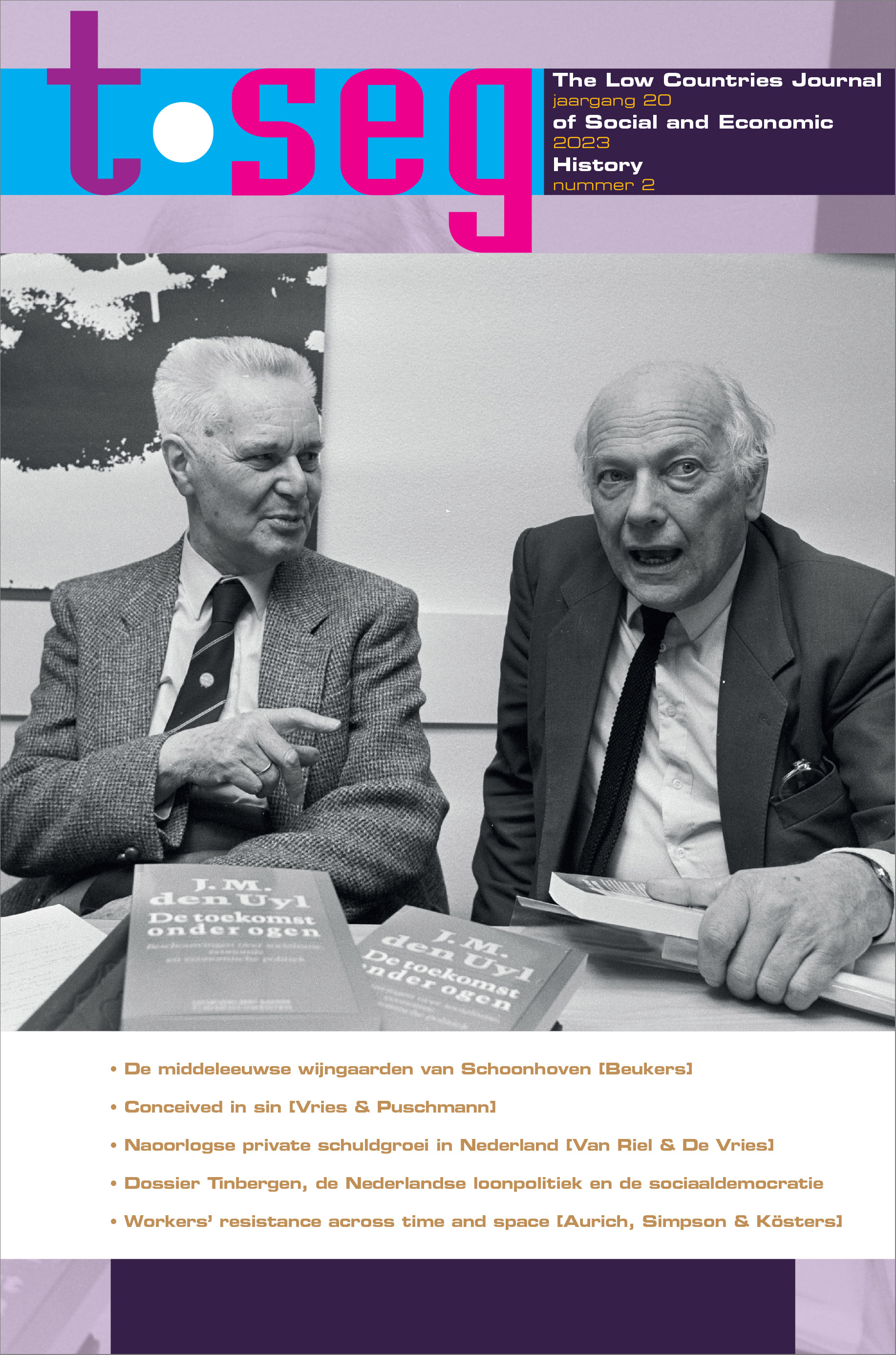Boven de 50ste breedtegraad
De middeleeuwse wijngaarden van Schoonhoven en Gouda
DOI:
https://doi.org/10.52024/tseg.11481Keywords:
vineyards, medieval history, Holland, GelreAbstract
Before the climate changes of the late twentieth century, the northern part of the Low Countries was generally assumed too cold and wet for viticulture. However, there is evidence of medieval vineyards and viticulture, for example in the gardens of several castles and noble residences in Holland and Gelre around 1375. This article explores the position, size and nature of the vineyards of the castle in Schoonhoven (Holland) between 1365 and 1397 and concludes that the reasons for planting those vineyards must be sought in the noble lifestyle of the owners, which required not only representative gardens with vineyards but also verjuice – the sour juice of unripe grapes – for the table. A second conclusion is that the presence of vineyards or viticulture in areas with less suitable climatic conditions not always automatically implies the production of wine (viniculture).
Downloads
Downloads
Published
Issue
Section
License
Copyright (c) 2023 Mariëlla Beukers

This work is licensed under a Creative Commons Attribution 4.0 International License.






